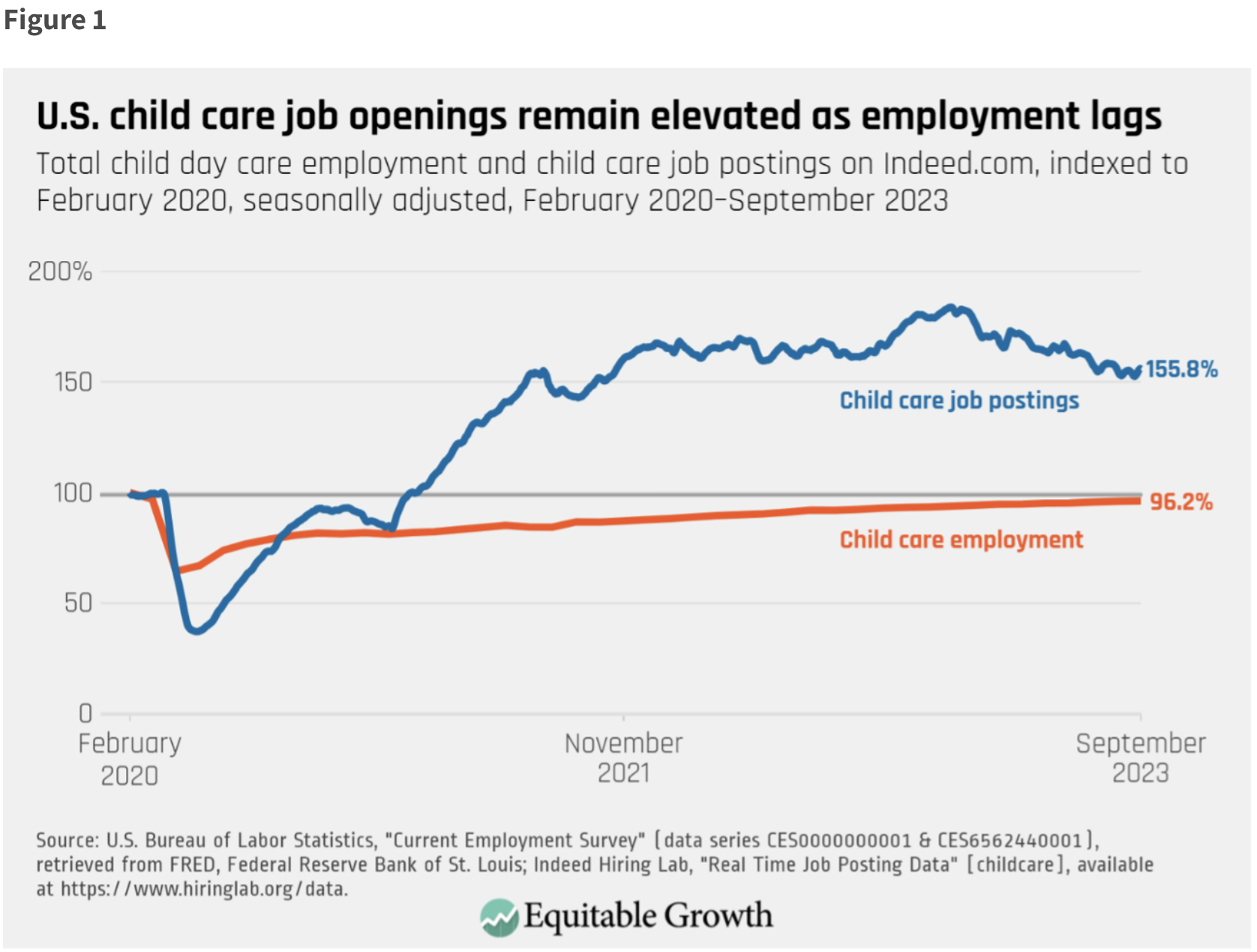Giving Compass' Take:
- Sam Abbott explores the relationship between the minimum wage and the challenges of the U.S. childcare system, which many families cannot afford to use and many workers cannot afford to work in.
- What role can you play in supporting a childcare system that works for families and workers?
- Read about the need for funding for the childcare system.
What is Giving Compass?
We connect donors to learning resources and ways to support community-led solutions. Learn more about us.
The U.S. child care market is plagued by a math problem. Families in the United States are stretched thin, dedicating substantial portions of their household budgets to child care expenses. Yet many child care workers find themselves among the lowest earners in the U.S. labor market. And all the while, child care providers are often barely keeping their heads above water with a meager 1 percent profit margin.
How can a service cost so much without its workforce making much money? Simply put, the answer comes down to liquidity constraints faced by both parents and providers, as well as high labor costs.
Families typically incur child care costs at a moment in their working lives when their general living expenses are high but their cash flow, or liquidity, is low. This liquidity constraint limits how parents can tolerate an increase in the cost of child care before turning to other options, such as a family member or reducing their own work hours. Providers are therefore discouraged from raising their prices—and, in turn, wages and profits—too quickly.
This creates a matching liquidity constraint for those child care providers who lack the profit margins to absorb any increases in business costs without a price pass-through to families. Since labor costs—workers’ salaries and benefits—account for between 65 percent and 76 percent of child care providers’ total expenses, they have to squeeze labor costs as low as possible to keep prices tolerable to their customers.
For decades, this liquidity tug-of-war yielded low, stagnant wages in the U.S. child care market. Since the COVID-19 pandemic and recession, however, circumstances exogenous to the child care sector have upended the standard formula.
Tightness in the broader U.S. labor market—economic parlance for the excess demand for labor in the economy—resulted in rising wages across the economy. This trend put pressure on child care providers to offer better pay to attract workers back to a child care workforce that is still depressed relative to its pre-pandemic levels. (See Figure 1.)

Read the full article about the U.S. childcare system by Sam Abbott at Washington Center for Equitable Growth.